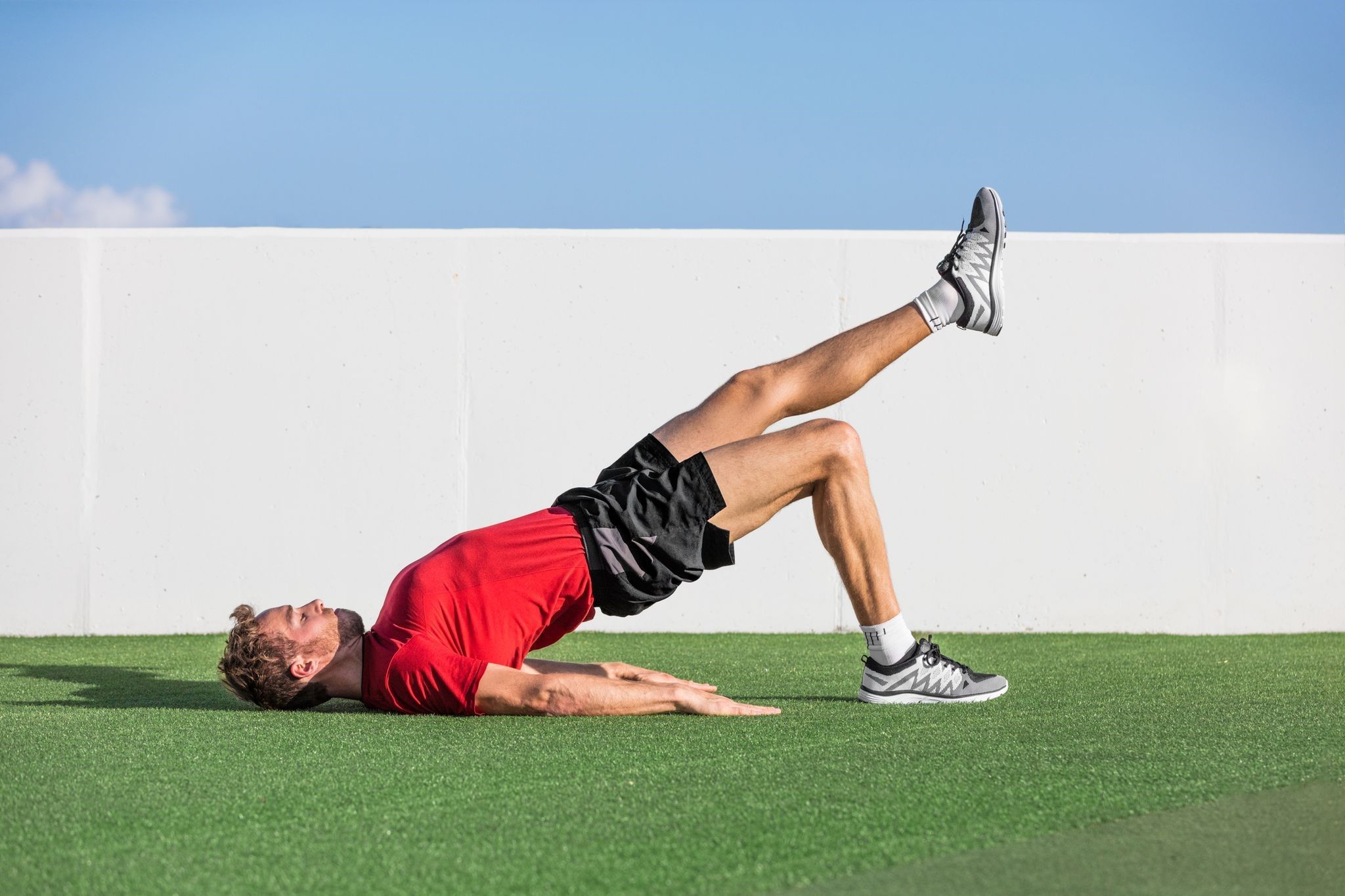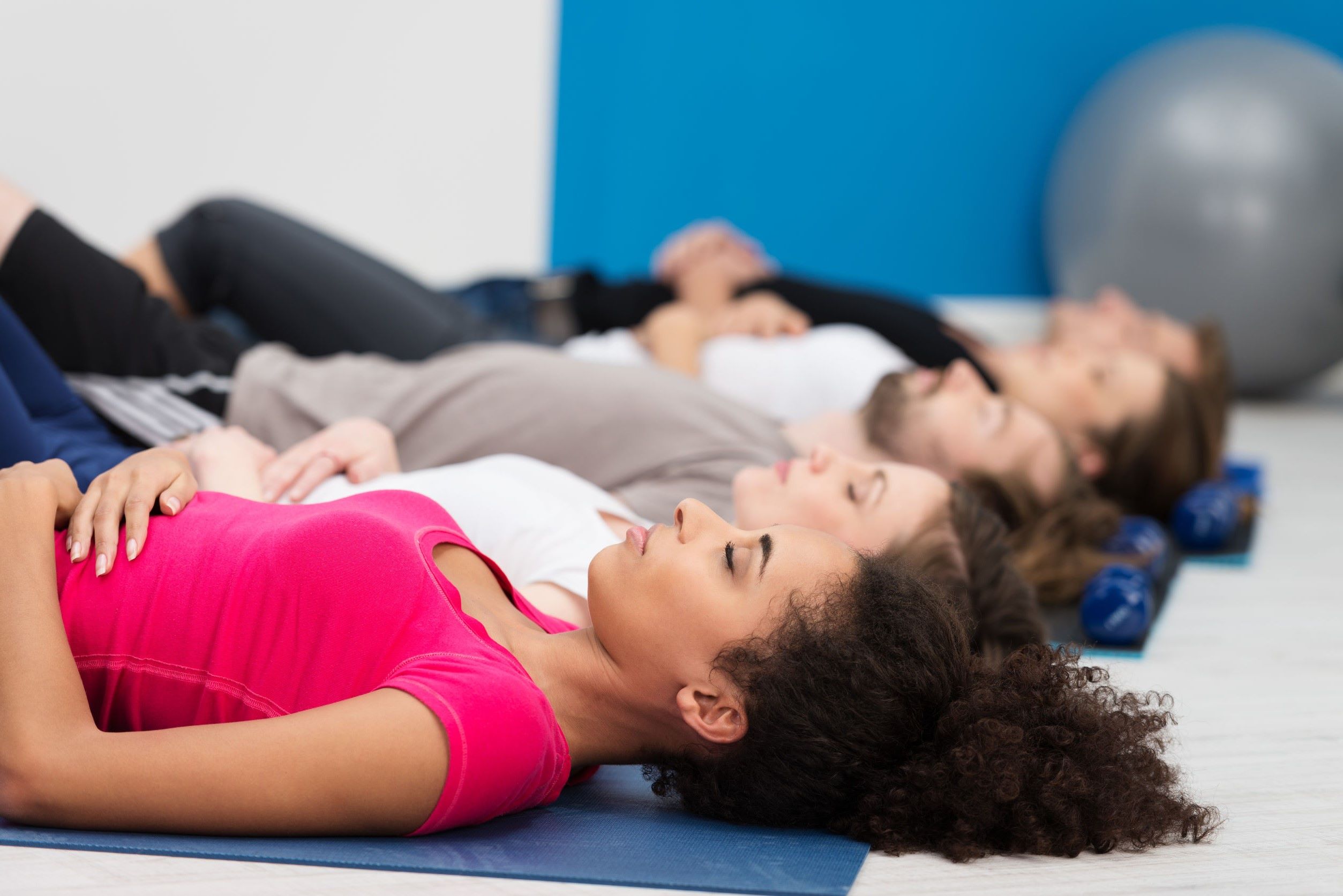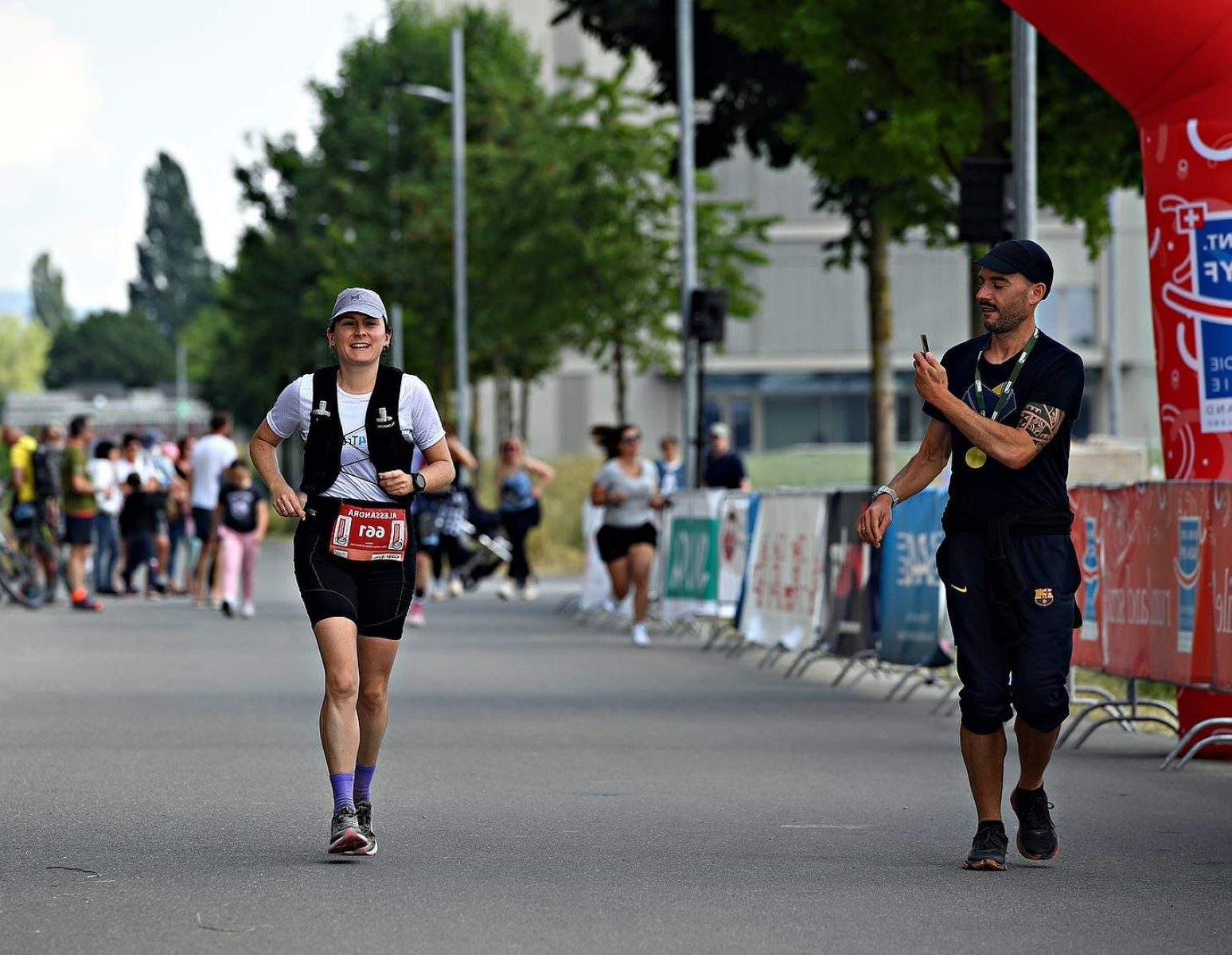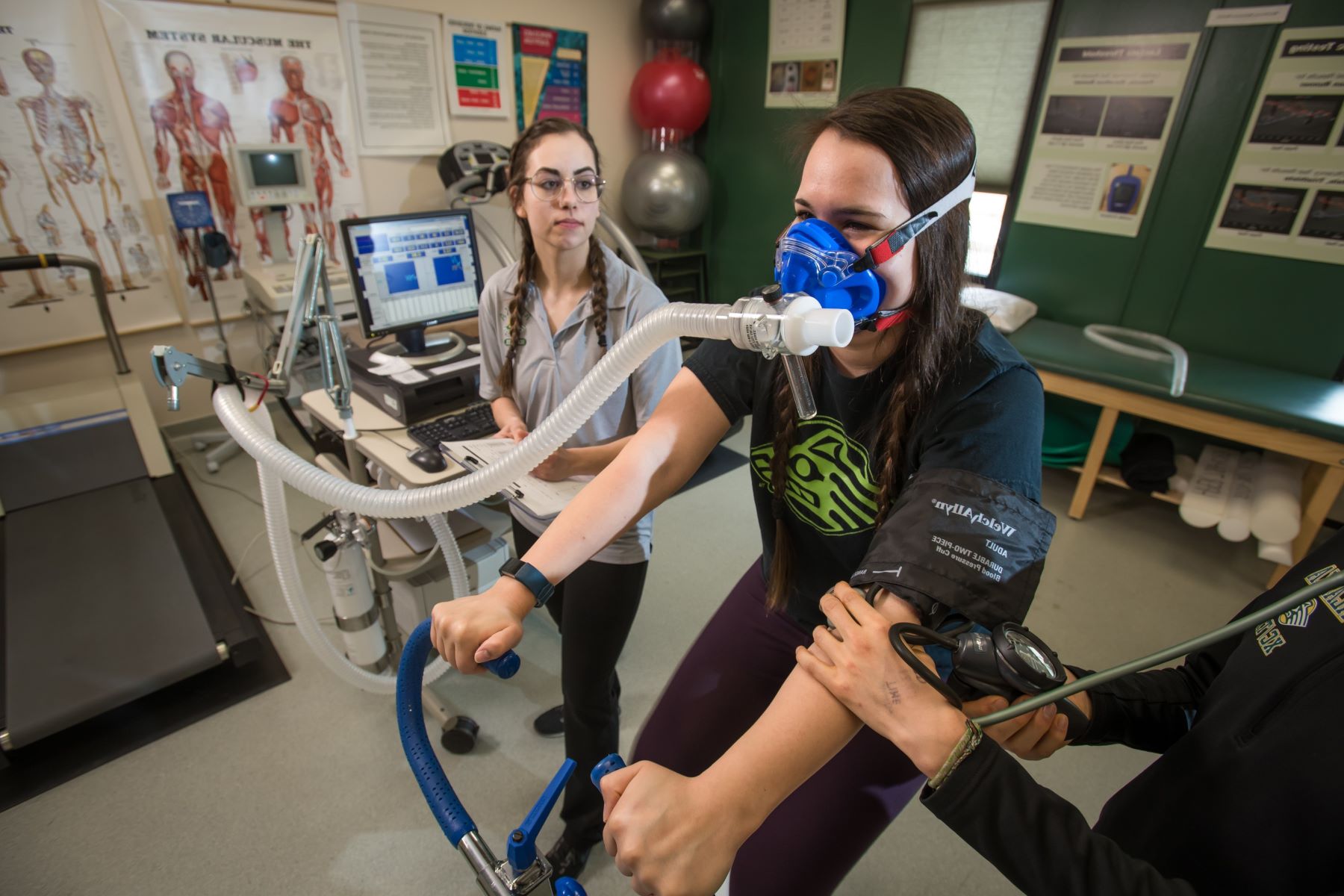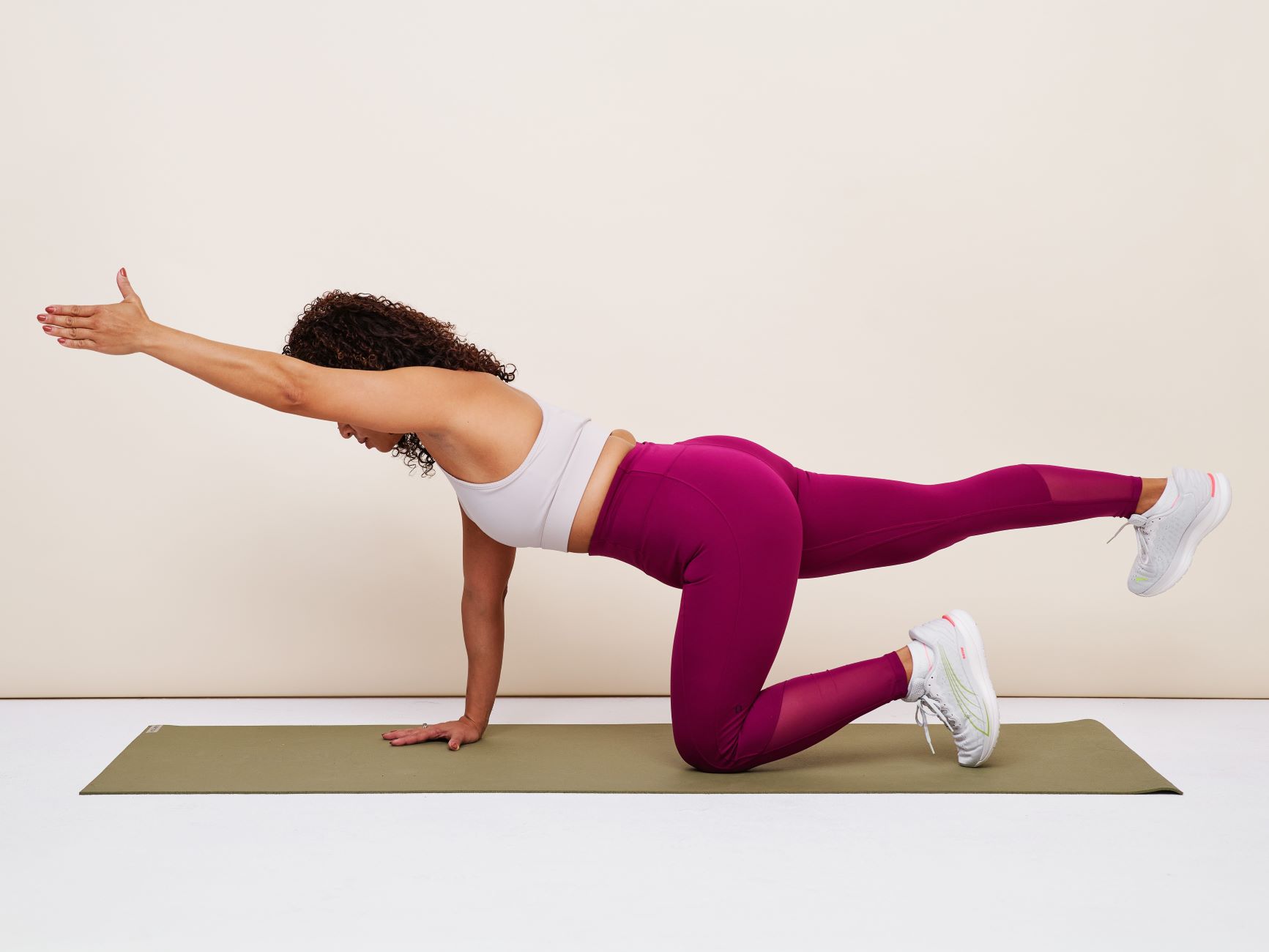Home>Training & Techniques>The Correct Way To Perform Lunges And Their Benefits


Training & Techniques
The Correct Way To Perform Lunges And Their Benefits
Published: March 5, 2024
Learn the proper techniques for lunges and discover the benefits of incorporating them into your training routine. Master the art of lunges with our expert guidance.
(Many of the links in this article redirect to a specific reviewed product. Your purchase of these products through affiliate links helps to generate commission for Therunningadvisor.com, at no extra cost. Learn more)
Table of Contents
Understanding the Proper Form for Lunges
Lunges are a fundamental exercise that can help strengthen and tone your lower body, but to reap the full benefits, it's crucial to execute them with the correct form. Proper form not only maximizes the effectiveness of the exercise but also minimizes the risk of injury. Here's a detailed guide to understanding the proper form for lunges:
-
Starting Position: Stand tall with your feet hip-width apart and your hands on your hips or by your sides. Engage your core muscles to stabilize your body.
-
Stepping: Take a step forward with one leg, ensuring that your stride is long enough so that when you lower your body, both knees form right angles. The front knee should be positioned directly above the ankle, and the back knee should hover just above the ground.
-
Alignment: Keep your upper body straight, with your shoulders relaxed and your chin up. It's important to maintain a neutral spine throughout the movement.
-
Descent: Lower your body by bending both knees until they are at approximately 90-degree angles. The front thigh should be parallel to the ground, and the back knee should be pointing toward the floor.
-
Ascent: Push through the heel of your front foot to return to the starting position. Keep the weight in your front heel as you straighten your leg and step back to the starting position.
-
Breathing: Inhale as you lower your body and exhale as you push back up to the starting position. Focus on controlled breathing to enhance your stability and endurance.
-
Repetition: Complete the desired number of repetitions on one leg before switching to the other leg. Aim for symmetry in your movements to ensure balanced muscle development.
By adhering to these guidelines, you can perform lunges with the correct form, optimizing the engagement of your quadriceps, hamstrings, glutes, and calves. This not only enhances the effectiveness of the exercise but also reduces the risk of strain or injury.
Mastering the proper form for lunges is essential for anyone looking to incorporate this versatile exercise into their workout routine. Whether you're a beginner or a seasoned fitness enthusiast, focusing on form will help you achieve the best results while safeguarding your body from unnecessary stress.
The Importance of Lunges in Your Workout Routine
Lunges are a cornerstone of any well-rounded workout routine, offering a multitude of benefits that contribute to overall physical fitness and well-being. Incorporating lunges into your exercise regimen can yield significant improvements in strength, balance, flexibility, and functional movement. Whether you're a fitness enthusiast, an athlete, or someone looking to enhance their daily physical activities, understanding the importance of lunges can inspire you to integrate this versatile exercise into your workout routine.
Strengthening Lower Body Muscles
Lunges target several major muscle groups in the lower body, including the quadriceps, hamstrings, glutes, and calves. By engaging these muscles through the dynamic movement of lunges, you can effectively build strength and endurance, leading to enhanced performance in various physical activities. Strong lower body muscles are essential for activities such as walking, running, climbing stairs, and maintaining proper posture, making lunges a valuable addition to any workout routine.
Enhancing Balance and Stability
The unilateral nature of lunges, which involves working one leg at a time, promotes balance and stability. This is particularly beneficial for individuals seeking to improve their coordination and stability, as well as athletes involved in sports that require agility and precise movement. By consistently performing lunges, you can enhance your body's ability to maintain equilibrium, reducing the risk of falls and injuries while engaging in daily activities or athletic pursuits.
Functional Movement Patterns
Lunges mimic everyday movements such as walking, climbing, and bending, making them highly effective for improving functional movement patterns. By incorporating lunges into your workout routine, you can enhance your body's ability to perform these essential movements with greater ease and efficiency. This can translate to improved mobility and reduced strain on the joints, ultimately contributing to a higher quality of life and increased physical resilience.
Core Engagement and Postural Alignment
Executing lunges with proper form requires core engagement and mindful postural alignment. This not only strengthens the core muscles but also promotes better posture and spinal alignment. As a result, integrating lunges into your workout routine can contribute to a stronger, more stable core and improved overall body alignment, reducing the risk of back pain and enhancing functional movement in daily life.
Versatility and Accessibility
One of the most compelling aspects of lunges is their versatility and accessibility. Whether you prefer bodyweight lunges, walking lunges, reverse lunges, or weighted lunges, there are numerous variations to suit your fitness level and goals. Additionally, lunges can be performed virtually anywhere, requiring minimal space and no specialized equipment, making them an ideal exercise for individuals with diverse fitness preferences and lifestyles.
In summary, the importance of lunges in your workout routine cannot be overstated. By incorporating lunges into your exercise regimen, you can reap a multitude of benefits, including strengthened lower body muscles, improved balance and stability, enhanced functional movement patterns, core engagement, and postural alignment. Moreover, the versatility and accessibility of lunges make them a valuable addition to any workout routine, catering to individuals with varying fitness aspirations and preferences.
Targeted Muscles and Benefits of Lunges
Lunges are a dynamic exercise that effectively target multiple muscle groups in the lower body, offering a wide array of benefits that contribute to overall physical strength and functional movement. Understanding the specific muscles engaged during lunges and the associated benefits can provide valuable insight into the significance of this exercise in a comprehensive workout routine.
Targeted Muscles
Quadriceps
The primary muscle targeted during lunges is the quadriceps, located at the front of the thigh. As you descend into the lunge position, the quadriceps engage to support the lowering of your body, effectively strengthening and toning these crucial muscles. Strong quadriceps are essential for activities such as walking, running, and jumping, making lunges a valuable exercise for improving lower body strength and power.
Hamstrings
Lunges also engage the hamstrings, the muscles located at the back of the thigh. As you push back up from the lunge position, the hamstrings contract to extend the hip and knee joints, contributing to the upward movement. Strengthening the hamstrings through lunges can enhance athletic performance, improve flexibility, and reduce the risk of hamstring-related injuries.
Glutes
The gluteal muscles, including the gluteus maximus, medius, and minimus, play a significant role in stabilizing the pelvis and supporting the body during lunges. These muscles are vital for activities such as standing, walking, and climbing stairs. By targeting the glutes, lunges contribute to improved lower body strength, stability, and overall functional movement.
Calves
During lunges, the calf muscles are engaged to stabilize the ankle and support the body's weight. This engagement contributes to the strengthening and toning of the calves, which are essential for activities such as walking, running, and jumping. Strong calves can enhance lower body endurance and contribute to improved performance in various physical activities.
Benefits of Lunges
Strength and Muscle Tone
Performing lunges regularly can lead to increased strength and muscle tone in the targeted lower body muscles. This not only enhances physical performance but also contributes to a more sculpted and defined lower body appearance.
Improved Balance and Stability
Lunges promote balance and stability by engaging the core and lower body muscles. This can lead to enhanced coordination and reduced risk of falls or injuries, making lunges particularly beneficial for individuals seeking to improve their overall stability and equilibrium.
Functional Movement Patterns
By mimicking everyday movements such as walking and climbing, lunges improve functional movement patterns, making daily activities more manageable and efficient. This can lead to improved mobility and reduced strain on the joints, ultimately enhancing overall physical resilience.
Core Engagement
Executing lunges with proper form requires core engagement, leading to strengthened abdominal and back muscles. This can contribute to improved posture, reduced risk of back pain, and enhanced overall core stability.
In summary, the targeted muscles and benefits of lunges underscore the significance of this exercise in promoting lower body strength, functional movement, and overall physical well-being. By incorporating lunges into a comprehensive workout routine, individuals can effectively target and strengthen key muscle groups while reaping a multitude of benefits that enhance their overall fitness and quality of life.
Tips for Maximizing the Effectiveness of Lunges
-
Focus on Proper Form: Maintaining correct form is paramount for maximizing the effectiveness of lunges. Ensure that your front knee is aligned with your ankle and does not extend beyond your toes. Keep your upper body upright and engage your core for stability. Proper form not only targets the intended muscles but also reduces the risk of injury.
-
Controlled Movements: Emphasize controlled movements throughout the lunge exercise. Avoid rushing through the motions and instead, focus on the deliberate lowering and raising of your body. This controlled approach enhances muscle engagement and ensures that each repetition is executed with precision.
-
Full Range of Motion: Strive to achieve a full range of motion during lunges. Lower your body until both knees are at approximately 90-degree angles, ensuring that your front thigh is parallel to the ground. This maximizes muscle activation and contributes to comprehensive strength development in the lower body.
-
Engage the Core: Actively engage your core muscles throughout the entire lunge movement. A strong core not only stabilizes your body but also enhances the effectiveness of the exercise by promoting proper alignment and posture. Focus on drawing your navel toward your spine to maintain core engagement.
-
Mindful Breathing: Pay attention to your breathing pattern while performing lunges. Inhale as you lower your body and exhale as you push back up to the starting position. Mindful breathing not only supports your body with oxygen but also aids in maintaining focus and control during the exercise.
-
Variety of Lunges: Incorporate a variety of lunge variations into your workout routine to target different muscle groups and prevent plateauing. Experiment with walking lunges, reverse lunges, and lateral lunges to challenge your muscles in diverse ways and promote overall lower body strength and stability.
-
Add Resistance: Integrate resistance, such as dumbbells or a barbell, to increase the intensity of your lunges. The added resistance challenges your muscles and promotes strength gains. Start with light weights and gradually progress to heavier loads as your strength and proficiency improve.
-
Consistency is Key: Consistency is crucial for maximizing the effectiveness of lunges. Incorporate lunges into your regular workout routine and strive for progressive overload by gradually increasing the difficulty or intensity of your lunges over time. Consistent practice leads to noticeable improvements in lower body strength and muscle tone.
By implementing these tips, individuals can optimize the effectiveness of their lunges, leading to enhanced lower body strength, stability, and overall physical fitness. Whether you're a fitness enthusiast, an athlete, or someone seeking to improve functional movement, integrating these strategies into your lunge routine can yield significant benefits and contribute to a well-rounded workout regimen.
Common Mistakes to Avoid When Performing Lunges
Performing lunges with improper form or technique can diminish the effectiveness of the exercise and increase the risk of injury. To ensure that you derive the maximum benefit from lunges while safeguarding your well-being, it's essential to be mindful of common mistakes and actively work to avoid them. Here are the key pitfalls to steer clear of when performing lunges:
Collapsing Knee Position
Allowing the front knee to collapse inward during lunges can place excessive stress on the knee joint and compromise proper muscle engagement. This misalignment not only reduces the effectiveness of the exercise but also heightens the risk of knee discomfort or injury. To avoid this, focus on maintaining proper knee alignment, ensuring that the knee tracks in line with the toes during the entire lunge movement.
Inadequate Range of Motion
Failing to achieve a full range of motion during lunges can limit the activation of targeted muscles and hinder overall strength development. A shallow lunge diminishes the engagement of the quadriceps, hamstrings, and glutes, thereby reducing the exercise's effectiveness. Strive to lower your body until both knees form approximately 90-degree angles, allowing for comprehensive muscle activation and strength gains.
Forward Leaning Torso
Leaning the upper body too far forward during lunges can compromise stability and detract from the exercise's intended focus on the lower body muscles. This incorrect posture places undue strain on the lower back and diminishes the engagement of the quadriceps and glutes. Instead, maintain an upright torso throughout the lunge movement, emphasizing proper alignment and core engagement to optimize muscle activation.
Overstriding
Taking excessively large steps during lunges can lead to an imbalance in the distribution of weight, potentially causing instability and reducing the effectiveness of the exercise. Overstriding may also result in the front knee extending beyond the toes, placing undue stress on the knee joint. To avoid this mistake, focus on taking controlled and moderate steps, ensuring that both knees form right angles when descending into the lunge position.
Lack of Core Engagement
Neglecting to engage the core muscles during lunges can compromise stability and diminish the exercise's effectiveness. A strong core is essential for maintaining proper posture and alignment, especially during dynamic movements like lunges. By actively engaging the core, you can enhance stability, reduce the risk of injury, and optimize the engagement of the targeted lower body muscles.
Read more: Mastering The Technique Of Jumping Lunges
Rushing Through the Movements
Performing lunges with haste and lacking controlled movements diminishes the exercise's effectiveness and increases the likelihood of improper form. Rushing through lunges can lead to reduced muscle engagement and limit the benefits of the exercise. Instead, focus on deliberate and controlled movements, emphasizing proper form and muscle activation throughout each repetition.
By being mindful of these common mistakes and actively working to avoid them, individuals can ensure that their lunges are executed with proper form, maximizing the exercise's effectiveness and minimizing the risk of injury. Whether you're a beginner or an experienced fitness enthusiast, prioritizing correct technique and mindful execution of lunges is essential for reaping the full benefits of this versatile lower body exercise.


